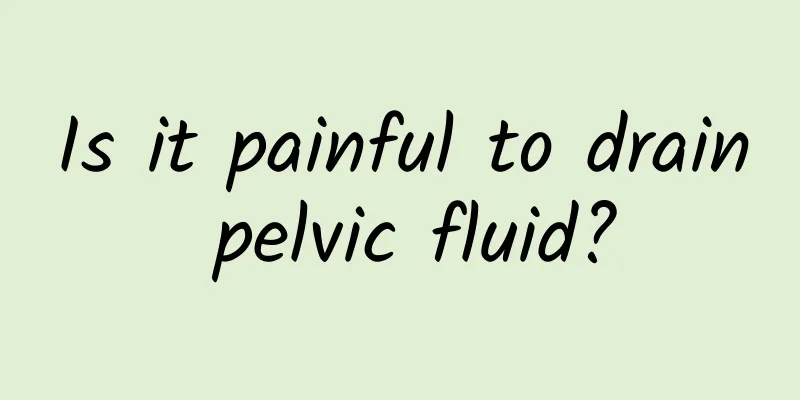Is it painful to drain pelvic fluid?

|
Pelvic effusion is often accompanied by bilateral or unilateral lower abdominal pain, lumbosacral pain, low back pain, lower abdominal distension and pain, low back pain, or lower abdominal pain, or increased leucorrhea, menstrual disorders, heavy menstrual blood, dysmenorrhea, etc. So, does it hurt to extract pelvic effusion? Generally, when there is pelvic effusion, only medication is needed, combined with adjustments in diet and daily routine. However, if there is a lot of pelvic effusion, it needs to be extracted through puncture. There will be a certain amount of pain during the puncture, which is generally within the tolerable range, so there is no need to worry too much. Surgical extraction of pelvic fluid is a common method and is generally painless. Surgical extraction of pelvic fluid can be done from the posterior vaginal fornix or by abdominal puncture. The specific steps are: use a relatively thick needle to pierce the pelvic cavity from the posterior vaginal fornix or abdominal cavity to extract the fluid. Although this method can quickly eliminate the fluid, it causes great pain to the patient, is expensive, and is not necessarily very effective. Simply extracting the fluid will not only fail to cure the pelvic fluid, but will also increase the amount of fluid. Because the pelvic cavity is the lowest part of the abdominal cavity in the whole body, when there is exudate or leaked fluid, it will drain into the pelvic cavity, thus forming pelvic effusion. Some normal women will have a small amount of blood accumulated in the pelvic cavity during menstruation or ovulation, forming pelvic effusion. Such pelvic effusion is sometimes a good thing, which proves that the woman's fallopian tube is unobstructed. If the fallopian tube has exudate, if the umbrella end is unobstructed, a small amount of exudate will flow into the pelvic cavity, thus forming pelvic effusion. If the fallopian tube is not unobstructed, it will cause fallopian tube effusion. The liquid of such pelvic effusion is generally less and will be gradually absorbed, so there is no need to be afraid. Generally, no treatment is required. |
<<: How to treat chronic pelvic inflammatory disease
>>: What are the causes of uterine fibroids?
Recommend
How to get your period
How to get menstruation? Let menstruation develop...
Are the symptoms of uterine fibroids obvious?
In today's society, there are more and more d...
Analyzing common mistakes in the treatment of vaginitis
As a common female disease, most female friends a...
What are the dangers of having uterine effusion?
Do you know the dangers of uterine effusion? Uter...
How to prevent female cervical erosion from spreading?
Female cervical erosion is a common disease in gy...
How to prevent vaginal candidal infection for expectant mothers
Generally speaking, about 40% of women have fungi...
What is the normal progesterone level at 5 weeks of pregnancy?
The normal value of progesterone at 5 weeks of pr...
Is banana milk effective for weight loss? Nutritionist: Don’t touch these landmines
There has been an oversupply of bananas recently....
Indications and contraindications for abortion
Artificial abortion, also known as artificial abo...
Women must know: Do not catch a cold after an abortion. Five major hazards of catching a cold after an abortion
After an abortion, if you catch a cold, you may c...
What are the symptoms of atrophic vulvar leukoplakia?
What are the symptoms of atrophic vulvar leukopla...
Current status of endometrial tuberculosis
The endometrium is the place where the female egg...
What are the treatment misunderstandings of cervical erosion in women? Women should pay special attention to these when treating cervical erosion.
Nowadays, many women are quite nervous after suff...
What are the ways to prevent Bartholinitis?
The Bartholin's glands are located at the bac...
What are the causes of irregular menstruation?
Irregular menstruation is a disease that many wom...









